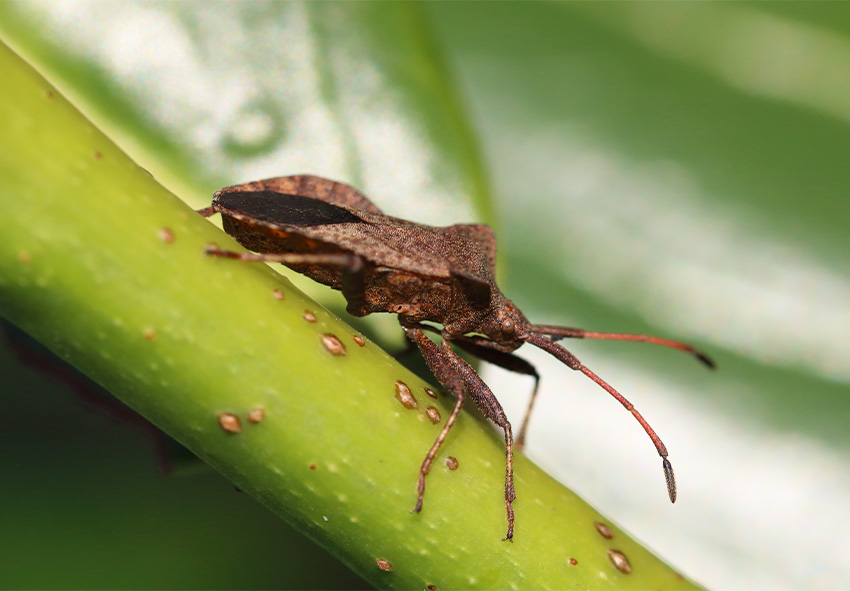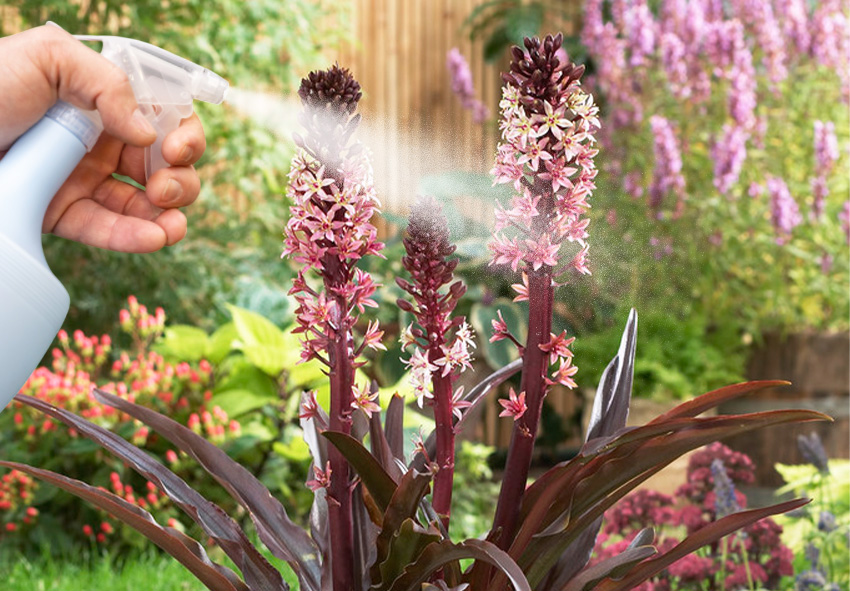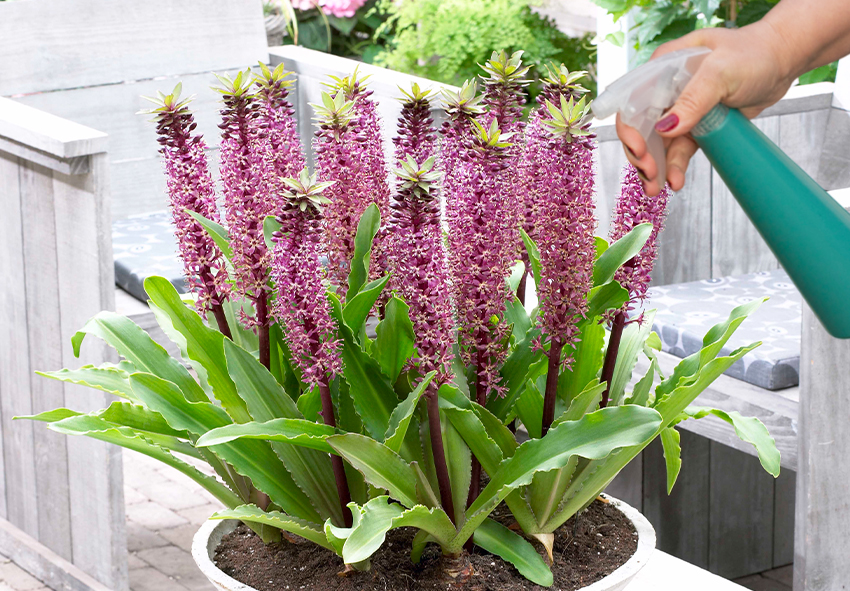Eucomis, commonly known as pineapple lily, is a striking and exotic-looking bulb plant known for its rosette of strap-like leaves and tall flower spikes. While relatively low-maintenance, Eucomis can still fall prey to several pests and diseases if not cared for properly. This article will guide you through effective methods of pest prevention, disease identification, and general plant care tips to keep your Eucomis thriving. Learning the basics of Eucomis plant care not only enhances their beauty but also ensures their longevity in your garden. With consistent observation and proactive treatment, you can enjoy healthy pineapple lilies year after year. Our gardening blog is a perfect place to find all the information you need!
Common Pests That Affect Eucomis

Pineapple lily pests can be a serious problem, especially during warm and humid periods. Identifying them early is crucial to preventing long-term damage. Pest infestations can rapidly escalate and weaken the plant’s defenses, making it more vulnerable to disease. Understanding the habits and signs of each pest will empower you to take timely action.
- Aphids
Aphids are small, soft-bodied insects that typically gather on new growth and the undersides of leaves. They feed by sucking plant sap, which can weaken your Eucomis and lead to curled or yellowed foliage. These pests also excrete honeydew, which can attract sooty mold and further damage the plant. Regularly inspecting new growth will help catch aphids before they multiply.
- Spider Mites
Spider mites are barely visible pests that cause stippling and discoloration on leaves, often accompanied by fine webbing. They thrive in hot, dry conditions and can quickly overrun a plant if not treated. Left unchecked, they can cause leaf drop and severely stunt the plant’s growth. Consistent misting and keeping the plant’s environment slightly humid can help deter them.
- Slugs and Snails
Slugs and snails feed on the tender leaves and flowers of Eucomis, leaving behind large holes and slime trails. These pests are most active at night and in damp conditions. They can cause significant cosmetic damage, especially to young plants and bulbs. Use physical barriers like crushed eggshells or diatomaceous earth to make the area less inviting.
Common Diseases in Pineapple Lilies
Like many bulb plants, Eucomis is susceptible to several fungal and rot-related diseases. Proper care and early detection are vital for successful Eucomis disease treatment. Neglected infections can spread rapidly and may even destroy the entire bulb. With appropriate cultural practices, many of these diseases are preventable.
Fungal Leaf Spots

- Description: These appear as brown or black spots on the leaves and may spread if humidity is high. Fungal spores can linger in debris and wet foliage. Leaf spots may reduce photosynthesis and weaken the plant over time.
- Prevention: Disinfect tools and avoid overhead watering to reduce the risk of spreading.
Bulb Rot
- Description: Bulb rot is a serious condition usually caused by overwatering or poor soil drainage. Affected bulbs may appear mushy or emit a foul odor. Once rot sets in, it can be difficult to save the plant without aggressive pruning.
- Prevention: Always plant bulbs in raised beds or well-aerated containers to improve drainage.
Powdery Mildew
- Description: Powdery mildew shows up as a white, powdery coating on the leaves, typically in humid, shaded conditions. It can stunt growth and reduce flowering. Though not often fatal, this disease can significantly reduce the plant’s aesthetic value.
- Prevention: Pruning crowded areas and providing sunlight will help control it naturally.
How to Prevent Pests and Diseases in Eucomis
Preventive care is one of the most effective strategies for managing pineapple lily pests and diseases. These basic practices will help build plant resilience. A proactive approach saves time and reduces the need for chemical intervention later. Healthy soil, proper watering, and good airflow are key pillars of plant defense.
Proper Watering Techniques
Overwatering is one of the leading causes of Eucomis disease, particularly bulb rot. Allow the soil to dry slightly between waterings, especially during the dormant season. Always check the top few inches of soil before watering to avoid excess moisture. Use containers with drainage holes if you’re growing Eucomis indoors.
Soil and Drainage Requirements
Eucomis prefers well-draining, sandy or loamy soil. Avoid planting bulbs in heavy clay or areas prone to waterlogging. Amending soil with compost and grit can further improve drainage quality. Raised beds are especially helpful in rainy regions.
Seasonal Care and Maintenance
Deadheading spent blooms helps reduce the chances of fungal disease and redirects energy to bulb development. In colder climates, lift and store bulbs indoors during winter. Remove any dead or decaying foliage promptly to minimize disease harboring. Mulching around the base can also help regulate soil moisture and temperature. If you need more caring tips, check our full guide to eucomis.
Organic and Chemical Control Methods

Knowing when and how to use treatment options is key to effective Eucomis plant care. Use the least invasive option first before turning to chemical treatments. Integrated pest management (IPM) strategies can be highly effective when tailored to the plant’s specific needs. Always consider the impact on beneficial insects and the surrounding environment.
Natural Remedies
Natural solutions like neem oil, garlic spray, and insecticidal soap are effective against many pests without harming beneficial insects. These options are ideal for organic gardeners or those with pets and children around. Consistent application every few days can significantly reduce pest populations. Always test sprays on a small leaf area first to avoid phytotoxicity.
When to Use Chemical Treatments
Chemical insecticides and fungicides should be used only if it’s necessary:
- Severe or Widespread Infestations: When pests like spider mites or aphids have spread across multiple plants or the entire plant is affected, chemical control may be necessary to stop the damage quickly.
- Failure of Organic or Natural Remedies: If repeated applications of neem oil, insecticidal soap, or homemade sprays do not reduce the pest or disease problem, it’s time to consider stronger treatments.
- Fungal Diseases That Progress Rapidly: Conditions like bulb rot or advanced powdery mildew can spread quickly and cause irreversible damage if not managed with fungicides early.
- Protection of High-Value or Rare Plants: When you’re dealing with rare or expensive varieties of Eucomis, you may opt for chemical solutions to avoid losing them entirely.
- When Weather Favors Fast Pest Reproduction: During hot, dry periods or prolonged humidity, pest populations can explode. In such cases, chemical treatments may provide faster control than organic alternatives.
Always follow label instructions and remember to keep chemicals in a secure place, especially around children and pets.
Final Tips for Healthy Pineapple Lilies
Maintaining healthy Eucomis plants involves regular inspection, proper care, and swift action when problems arise. Focus on prevention by managing moisture levels, pruning regularly, and spacing plants properly. Rotate plant positions each season to avoid recurring pest issues. Encourage beneficial insects like ladybugs to maintain natural balance in your garden.
Frequently Asked Questions (FAQs) about Eucomis Pests & Diseases
1. How do I know if my Eucomis has a pest problem?
Look for signs like discolored, curling, or spotted leaves; visible insects such as aphids or mites; fine webbing; or holes from slug damage. Regular inspection of the leaves (especially underneath), stems, and soil surface can help catch pests early before they spread or cause significant harm to the plant.
2. Can Eucomis recover from bulb rot?
Recovery is possible if the rot is detected early. Remove the bulb from the soil, trim away all affected soft or dark tissue, and dust the healthy portion with fungicide. Replant only in dry, well-draining soil. However, if more than half the bulb is mushy or smells foul, replacement may be necessary.
3. Can Eucomis bulbs be ordered from your online store?
Our online store Dutch-bulbs.com offers a wide selection of Eucomis bulbs, making it easy for you to add these elegant beauties to your garden. We source our bulbs from reputable growers to ensure you receive high-quality specimens. Simply browse our online catalog, select your preferred Eucomis varieties, and follow the easy ordering process.
4. Is it safe to use chemical sprays on Eucomis grown in containers?
Yes, chemical sprays can be used on container-grown Eucomis, but always follow label instructions carefully. Move the container outdoors or to a well-ventilated area when applying treatments. Avoid applying in direct sunlight or during high heat, and protect nearby plants or surfaces. Rinse containers afterward to remove any residue.
5. Can I plant Eucomis bulbs again after a pest infestation?
Yes, but only after thoroughly cleaning and treating the bulbs. Inspect for damage, remove any pests, and soak the bulbs in a mild insecticide or fungicide solution if needed. Allow them to dry before replanting in fresh, pest-free soil. Avoid reusing old potting mix that may harbor eggs or larvae.
Published: 29.04.2025
